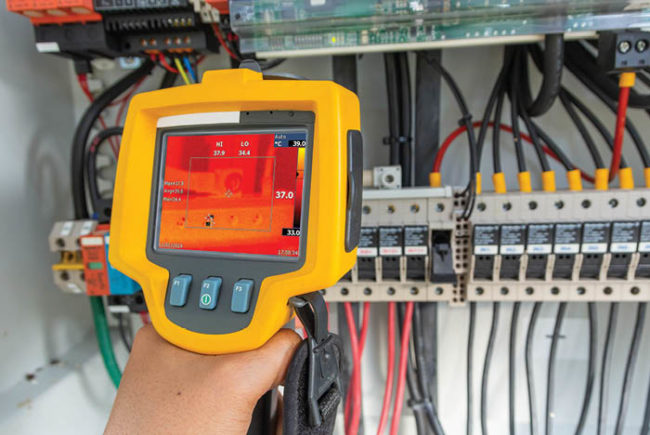Predictive maintenance (PdM), also sometimes called condition-based maintenance, has been around for a long time, just not by these specific names. Workers often used simple tools of the trade (e.g., a screwdriver, a short pipe, human hearing and sense of smell) to assess unusual equipment sounds, unexpected vibrations and pending failures.
PdM then further evolved during scheduled equipment inspections and testing by sampling oil or other fluids, using hand-held technology such as infrared scanners and ultrasonic condition monitoring. The results of scheduled inspections and testing are useful, providing that the results are assessed in time to permit completing necessary corrective action before a pending failure actually occurs.
More recently, many original equipment manufacturers have been providing new equipment with built-in sensors tied by the Internet of Things to software that is capable of diagnosing problems and creating work orders. Installed predictive technology has the benefit of continuous monitoring to determine and alarm staff of pending failures regardless of a testing calendar. The PdM sensor monitoring outputs, when acted upon to prevent pending failures, result in a much more reliable infrastructure.
The PdM sensor applications apply to equipment with moving parts such as fans, air handlers, pumps and other mechanical or plumbing equipment. Numerous types of sensors can fill those needs. Electrical equipment PdM sensors also can include partial discharge monitoring (a subset of ultrasonic condition monitoring) and internal monitoring of physical operating conditions and other types of devices.
What is the benefit to a health care facility? The Department of Energy’s (DOE’s) “Operations and Maintenance Best Practices, Release 3.0 — A Guide to Achieving Operational Efficiency” projects an 8% to 12% reduction in maintenance costs over a typical preventive maintenance program. The DOE document also states that, depending on a facility’s reliance on reactive maintenance and material condition, those savings could exceed 30% to 40%. According to that publication, industry studies also have indicated 70% to 75% decrease in breakdowns, and 35% to 45% reduction in downtime.
An American Society for Health Care Engineering tool provides stepwise guidance for implementing PdM and recommends using reliability-centered maintenance to prioritize new PdM projects. Members can visit the link in the "ASHE Resource" box to access it.





